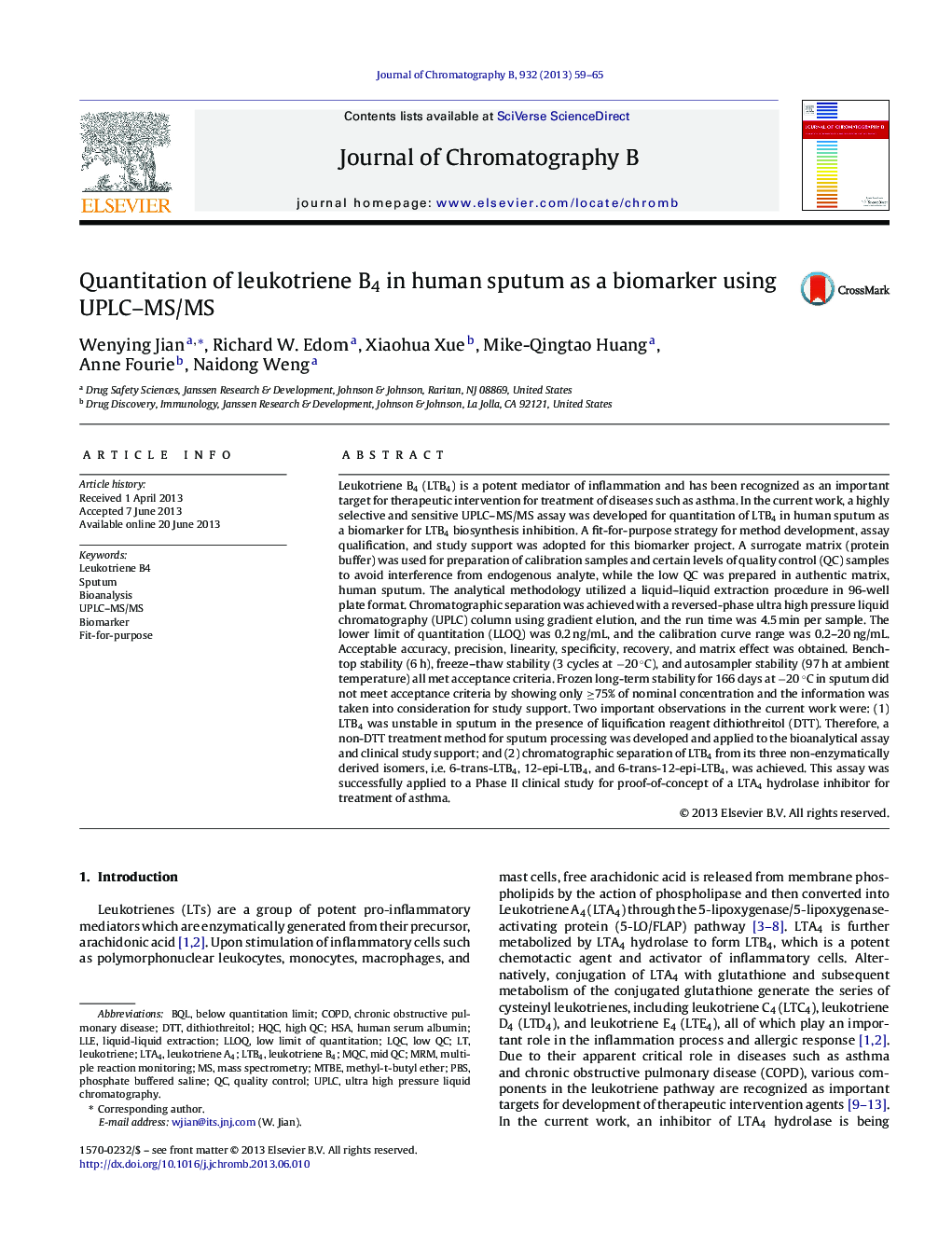| Article ID | Journal | Published Year | Pages | File Type |
|---|---|---|---|---|
| 1213369 | Journal of Chromatography B | 2013 | 7 Pages |
•A sensitive, selective and high-throughput UPLC–MS/MS method was developed for quantitation of LTB4.•Chromatographic separation of LTB4 from its non-enzymatically derived isomers was achieved.•A fit-for-purpose strategy for method development and assay application.•LTB4 was shown to be unstable in sputum in presence of the liquification reagent, dithiothreitol.
Leukotriene B4 (LTB4) is a potent mediator of inflammation and has been recognized as an important target for therapeutic intervention for treatment of diseases such as asthma. In the current work, a highly selective and sensitive UPLC–MS/MS assay was developed for quantitation of LTB4 in human sputum as a biomarker for LTB4 biosynthesis inhibition. A fit-for-purpose strategy for method development, assay qualification, and study support was adopted for this biomarker project. A surrogate matrix (protein buffer) was used for preparation of calibration samples and certain levels of quality control (QC) samples to avoid interference from endogenous analyte, while the low QC was prepared in authentic matrix, human sputum. The analytical methodology utilized a liquid–liquid extraction procedure in 96-well plate format. Chromatographic separation was achieved with a reversed-phase ultra high pressure liquid chromatography (UPLC) column using gradient elution, and the run time was 4.5 min per sample. The lower limit of quantitation (LLOQ) was 0.2 ng/mL, and the calibration curve range was 0.2–20 ng/mL. Acceptable accuracy, precision, linearity, specificity, recovery, and matrix effect was obtained. Bench-top stability (6 h), freeze–thaw stability (3 cycles at −20 °C), and autosampler stability (97 h at ambient temperature) all met acceptance criteria. Frozen long-term stability for 166 days at −20 °C in sputum did not meet acceptance criteria by showing only ≥75% of nominal concentration and the information was taken into consideration for study support. Two important observations in the current work were: (1) LTB4 was unstable in sputum in the presence of liquification reagent dithiothreitol (DTT). Therefore, a non-DTT treatment method for sputum processing was developed and applied to the bioanalytical assay and clinical study support; and (2) chromatographic separation of LTB4 from its three non-enzymatically derived isomers, i.e. 6-trans-LTB4, 12-epi-LTB4, and 6-trans-12-epi-LTB4, was achieved. This assay was successfully applied to a Phase II clinical study for proof-of-concept of a LTA4 hydrolase inhibitor for treatment of asthma.
